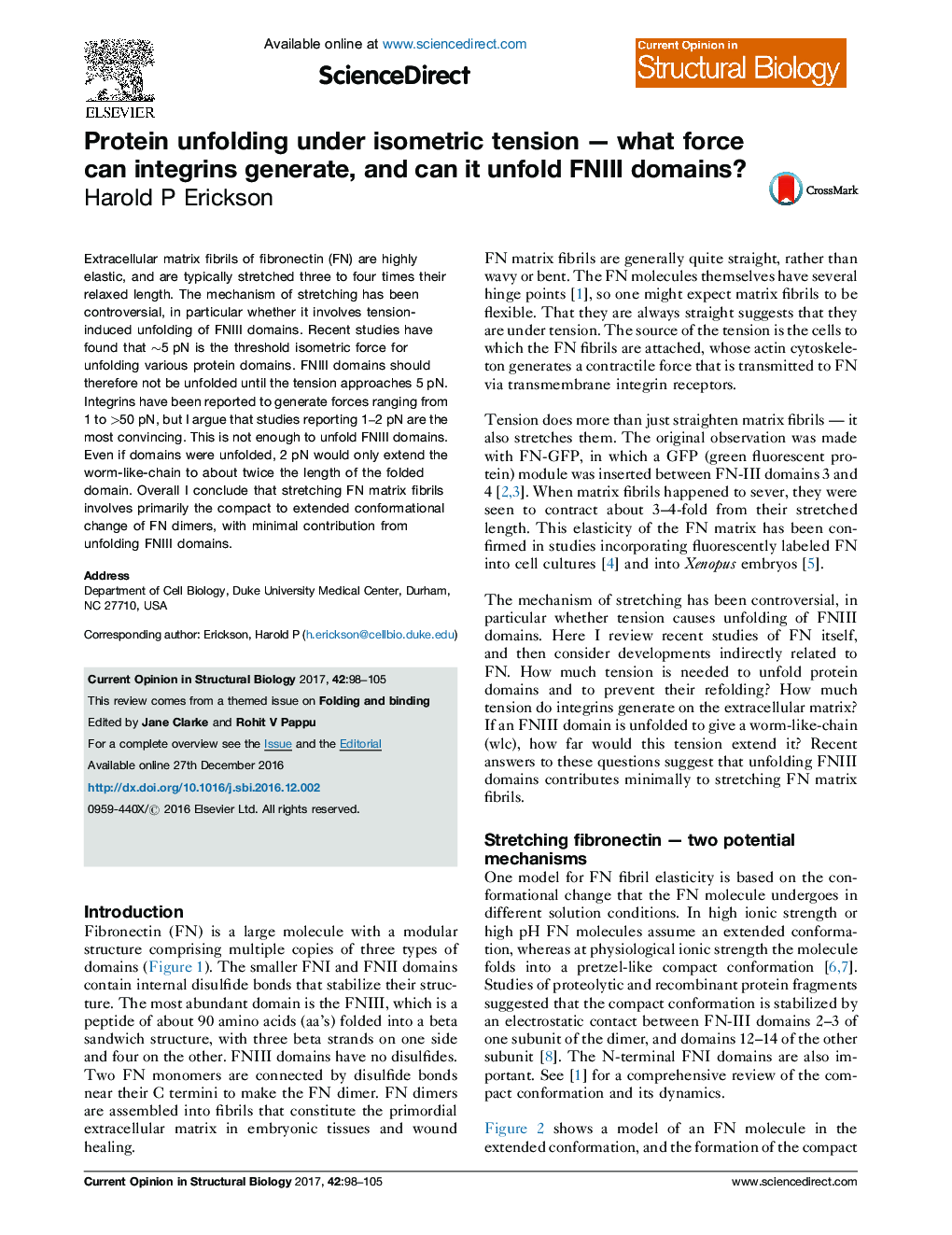| Article ID | Journal | Published Year | Pages | File Type |
|---|---|---|---|---|
| 5510879 | Current Opinion in Structural Biology | 2017 | 8 Pages |
â¢The isometric tension needed to unfold various protein domains is â¼5 pN.â¢Single integrins generate a force of 1-2 pN on the ECM ligand.â¢2 pN would only extend an unfolded FNIII (wlc) from 3.5 to 6 nm, not 3-4-fold.â¢I conclude that unfolding FNIII domains contributes minimally to stretching FN fibrils.â¢The compact to extended conformation can explain the stretching of FN fibrils.
Extracellular matrix fibrils of fibronectin (FN) are highly elastic, and are typically stretched three to four times their relaxed length. The mechanism of stretching has been controversial, in particular whether it involves tension-induced unfolding of FNIII domains. Recent studies have found that â¼5Â pN is the threshold isometric force for unfolding various protein domains. FNIII domains should therefore not be unfolded until the tension approaches 5Â pN. Integrins have been reported to generate forces ranging from 1 to >50Â pN, but I argue that studies reporting 1-2Â pN are the most convincing. This is not enough to unfold FNIII domains. Even if domains were unfolded, 2Â pN would only extend the worm-like-chain to about twice the length of the folded domain. Overall I conclude that stretching FN matrix fibrils involves primarily the compact to extended conformational change of FN dimers, with minimal contribution from unfolding FNIII domains.
